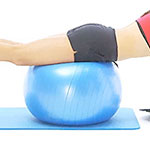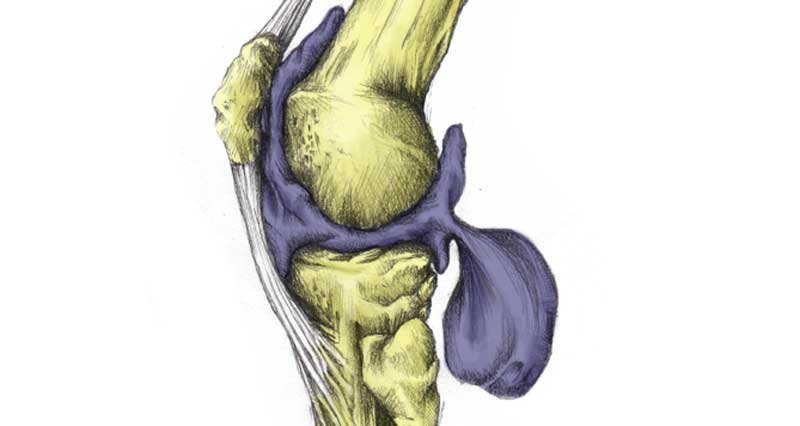An abdominal strain is a tear or rupture of the abdominal muscles, usually where it attaches to the pelvis. It is more common in sports such as pole vault, gymnastics, and rowing.
Symptoms
Symptoms of abdominal muscle strain include:
- Sudden sharp pain in the abdominal muscles
- Tenderness and inflammation over an area of the rectus abdominis
- Pain increases when contracting the abdominal muscles (e.g. stomach crunch exercise)
What is an abdominal strain?
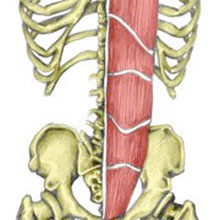
An abdominal strain is a tear to the muscle or tendon usually of the rectus abdominus muscle although other muscles in the stomach area such as the internal obliques or external obliques can be affected.
Ruptures occur in weightlifters, throwers, gymnasts, rowers, wrestlers, pole vaulters, and other sports, and they involve fast whole-body movements and changes of direction. If the athlete returns to training before the injury can heal fully, repeated injuries and chronic tendon inflammation may occur.
Treatment
Treatment consists of immediate first aid, rest, and then when pain allows strengthening exercises.
Immediate first aid
- Apply cold therapy immediately to help ease bleeding, pain, and swelling.
- The sooner you can apply cold therapy to the site of the injury the sooner you can stop any internal bleeding and the faster it is likely to heal.
- Ice can be applied for 10 to 15 minutes every hour for the first 24 to 48 hours when the injury is in the acute stage.
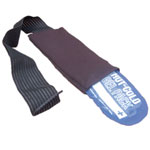
Cold Therapy Wraps
Rest
- Rest until there is no pain.
- This may be a few days for a mild injury or two or three weeks for a more severe strain.
- If it is possible to use an exercise bike pain-free then do so but if it hurts then wait.
Medication
- A doctor may prescribe anti-inflammatory medication such as ibuprofen to reduce pain and swelling
Electrotherapy
- A professional practitioner may use electrotherapy including ultrasound and laser treatment.
- Ultrasound passes high-frequency sound waves into the tissue applying a micro-massage effect which can help reduce pain, inflammation, and swelling.
Massage
- Deep tissue sports massage may be beneficial in aiding the healing process once the acute stage has passed.
- Cross-friction massage can be applied to the tendon where it attaches to the bone.
- This may help to realign new collagen fibres and prevent adhesions or sticky bits in the tendon from forming.
- Sustained pressure and other massage techniques applied to the muscles can help improve blood flow and relax tight knots in the muscle.
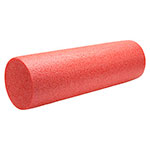
Foam Rollers
Exercises for abdominal muscle strain
A full rehabilitation program consisting of abdominal and core strengthening exercises should be begun as soon as pain allows. A few basic exercises are shown below:
Abdominal crunch
- Lay on your back with your knees bent.
- Place your hands behind your neck (don’t pull your neck forwards).
- Lift the head, neck, and shoulders off the ground and slide your hands up, towards your knees.
- Try to keep the same gap between your chin and chest to avoid straining the neck.
- Slowly return to the start position.
- This exercise can be made easier by starting with your hands on your thighs and moving them up towards the knees as you contact the abs.
Twisting crunch
- This exercise is performed similarly to the one above only you twist or rotate inwards while performing the crunch. This targets the oblique muscles more.
The plank
- This should only be done if pain-free.
- Start in a push-up position and raise yourself so that your elbows are completely straight. Your hands should be facing directly forwards and you should be up on your toes.
- Inhale and engage your core.
- As you exhale, float one leg upwards so that it is in line with your back. Your toes on the raised leg should be pointing away from you and you should be in a position so that the back of your body represents a plank.
- Return the leg to the start position after one breath and repeat with the opposite leg.
Abdominal roller
- This is an advanced exercise and should only be done later in the exercise program.
- The athlete pushes the roller out whilst on hands and knees, holds the stretched-out position briefly then returns to the starting position.
- This is excellent for developing strong abdominal muscles and deeper core muscles, however too much too soon could cause the injury to recur.
See core strengthening exercises for further information on more advanced exercises for the core and abdominal muscles.
Chronic injuries
Chronic or persistent injuries may be given a steroid injection followed by rest for 2 weeks. In rare cases, a surgeon may operate. If you rest as soon as there is a sign of injury then it should not take more than a couple of weeks to heal. If you have ruptured the muscle the healing time will depend on how bad the strain is.

